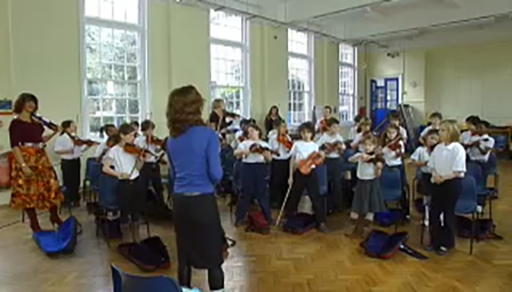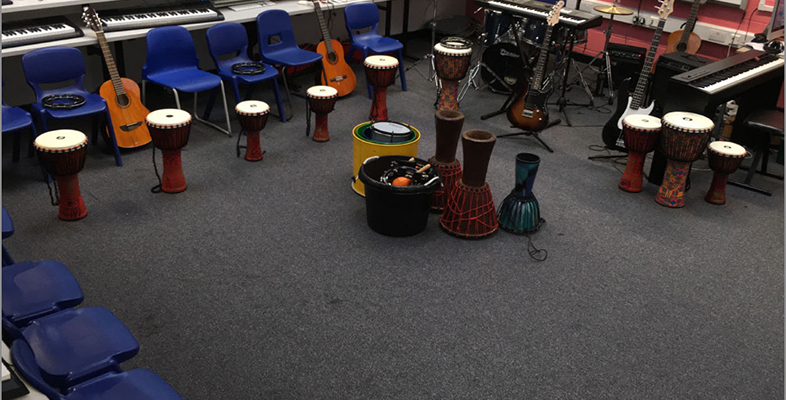Characteristic 4: Opportunities for young people to be and to act creatively
Professor Pam Burnard writes that:
At the core of music-making is a deep sense of curiosity and wonder, a desire to question and ponder; … At its richest, learning music is an energising, purposeful and imaginatively vital experience, … At its poorest, music teaching and learning can be a dry, disconnected experience, focused on the instruction of assessable skills, and one that pays little attention to children’s affective or creative development as musical learners and music users.
She suggests that creative teaching and learning in music can be developed through teaching approaches that promote:
- collaboration
- risk-taking
and the activities of:
- improvising
- composing
- performing
- listening.
Activity 14
Part 1
Complete Table 3. For each ‘context’ give an example from your own practice, from teaching that you have observed or from a speculative example.
| Examples from practice | Further ideas | |
|---|---|---|
| Collaboration – activities that engage both teachers and children in music-making. | ||
| Risk-taking – activities that allow learners to experiment musically without always being assessed or judged. For example, setting an unsupported task involving a problem or teachers modelling ‘risky learning’ by attempting to compose a song with their class. | ||
| Improvising – activities that encourage exploration of sounds, both acoustically and using technology, developing non-verbal communication during improvisations and a sense of play and experimentation. | ||
| Composing – activities that focus children on thinking about structures, purpose and intentions, following improvisation activities. For example, learners quickly relate to modern technology. | ||
| Performing – activities that engage learners in developing their confidence, self-esteem and analytical thinking, helping them to feel the excitement of preparing to perform and the joy of doing so. | ||
| Listening – activities that engage learners in listening to a wide variety of music played and made by other artists. |
Part 2
Now watch the video clip Scales Doh.

Transcript
What kinds of creative teaching and creative learning can you identify here? Note these down.
Can you think of other ways in which the teacher might have promoted further any creative aspect of this lesson? Explain how you think this might have been done.
Part 3
Finally, return to your lesson plan and amend it, ensuring there are opportunities for children to engage creatively with music as decision makers and problem solvers.
